A. Lange and Söhne Zeitwerk Date – Making Something Good Even Better
A close-up look at the ingenious technical solutions inside the Zeitwerk Date.
If you thought the original Zeitwerk was a wonderful time machine with no room for improvement, you haven’t met Anthony de Haas, Director of Product Development for A. Lange & Söhne. The incorporation of a date complication might not sound like a very big deal, but when you discover the mind-bending solutions inside the newly designed movement, you won’t be able to look at the Zeitwerk Date in the same way any longer. What’s usually considered a simple complication in a watch becomes a technical challenge here.
Deceptively simple, extremely complex
However, before we explore the technical solutions required to make the Zeitwerk Date, it’s worth taking a quick look at the ingenious mechanics of the original Zeitwerk. The distinctive display of the Zeitwerk – with two large rectangular apertures in the centre of the dial, the signature time bridge spanning the length of the dial and dipping to embrace the small seconds counter and the AB/AUF power reserve indicator at the top – has become another icon in Lange’s pantheon. The disarming thing though about the original Zeitwerk is that it looks like a very straightforward watch with the simplest and most intuitive digital display of the hours on the left and the minutes on the right. But as the saying goes, making something look simple is usually the result of ball-breaking hard work.
Introduced in 2009, the Zeitwerk was the first mechanical wristwatch to display the time with jumping numerals on three separate discs. Unlike some digital displays of the past, with the time displayed vertically (Pallweber) or relying on creeping displays with continuously rotating discs, Lange opted for a large, generous horizontal display (the fact that the minute intervals are on two separate discs means that they can be much larger).
Because the numbers were placed on three discs, the challenge was to provide enough energy for the three discs to perform their jumps instantaneously, in perfect synch, in less than a second (at 7:59, for example). A triple-jumping performance of this kind requires tremendous force and to provide the energy necessary, the Zeitwerk is equipped with an extra-strong mainspring. The snag is that the spring tends to deliver more power when it is fully wound and less when it unwinds resulting in serious chronometry issues.
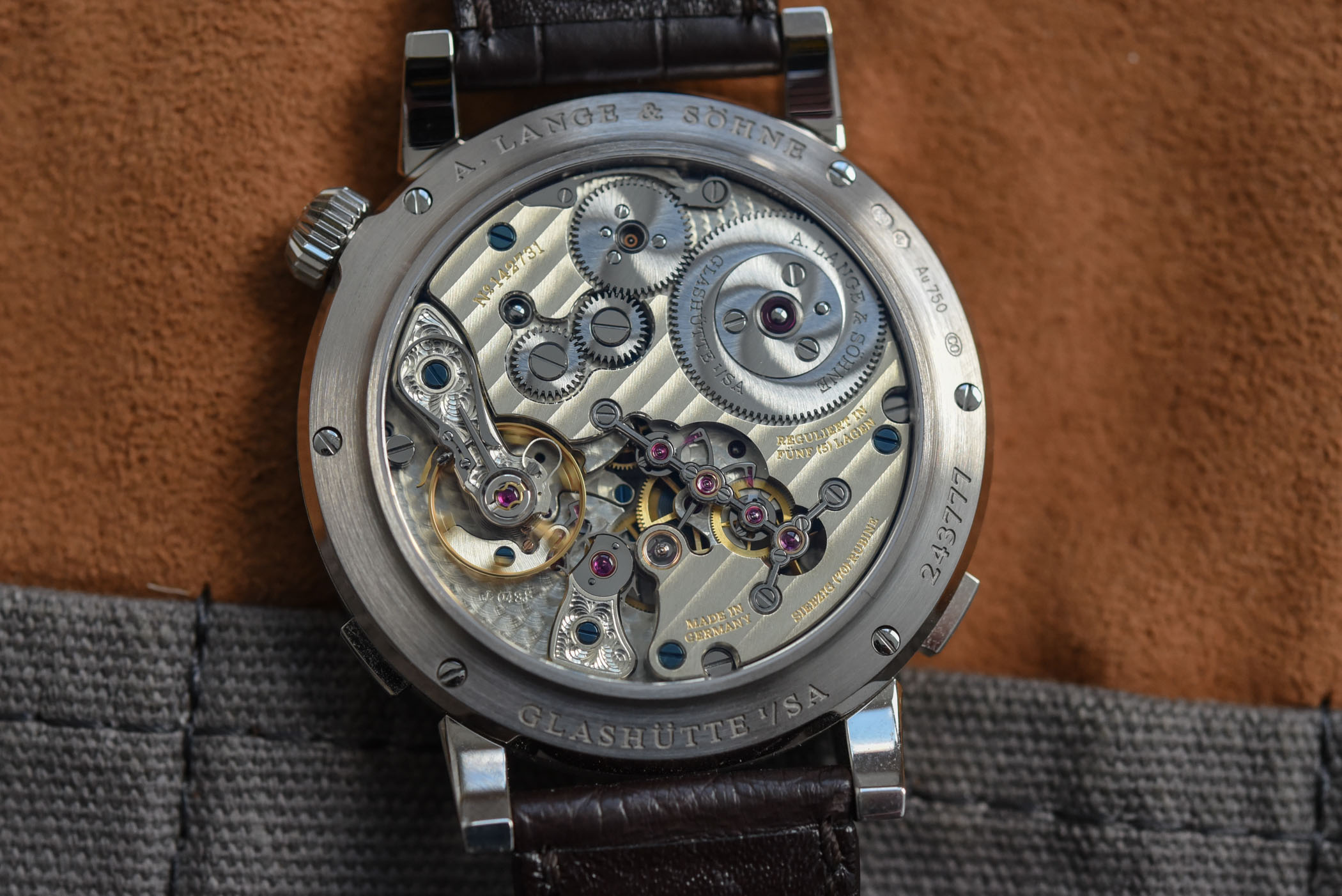
To solve this uneven flow of energy, the solution was provided in the form of a patented constant-force escapement. Also known as a remontoire, the mechanism releases the power with constant force, once every minute. If you are interested in exploring the world of constant force escapements, don’t miss Xavier’s in-depth coverage. You can actually see this amazing piece of engineering in the movement, a sort of anchor-like bridge sitting on top of the gears. Storing energy for a whole minute, the remontoire releases a burst of steady energy for each jump.
Anniversary present
Since its debut in 2009, the Zeitwerk has been treated to all sorts of additional complications, all of the chiming kind with the Striking Time, Minute Repeater and Decimal Strike. In 2019, coinciding with its tenth anniversary, the Zeitwerk received a date complication. It might not sound like the most generous of presents fo a watch that had already been regaled complex striking mechanisms, but the technical wizardry behind this date, which required the incorporation of a new manufacture calibre, turned out to be a very handsome present indeed.
Boosting the Power reserve
The one complaint about the Zeitwerk (no date) was its short power reserve of 36 hours. Anthony de Haas and his team decided it was time to duplicate the power reserve to 72 hours by equipping the watch with a twin-barrel movement. This meant a lot of fine-tuning, like optimising the adjustment of the remontoire system and changing the weight of the balance wheel, without making the watch thicker or bigger. As Anthony de Haas explained to Frank in our video, the steel remontoire bridge is “the heart of the Zeitwerk” delivering constant force to the escapement but also “steering the exact jumping of the time and date”.
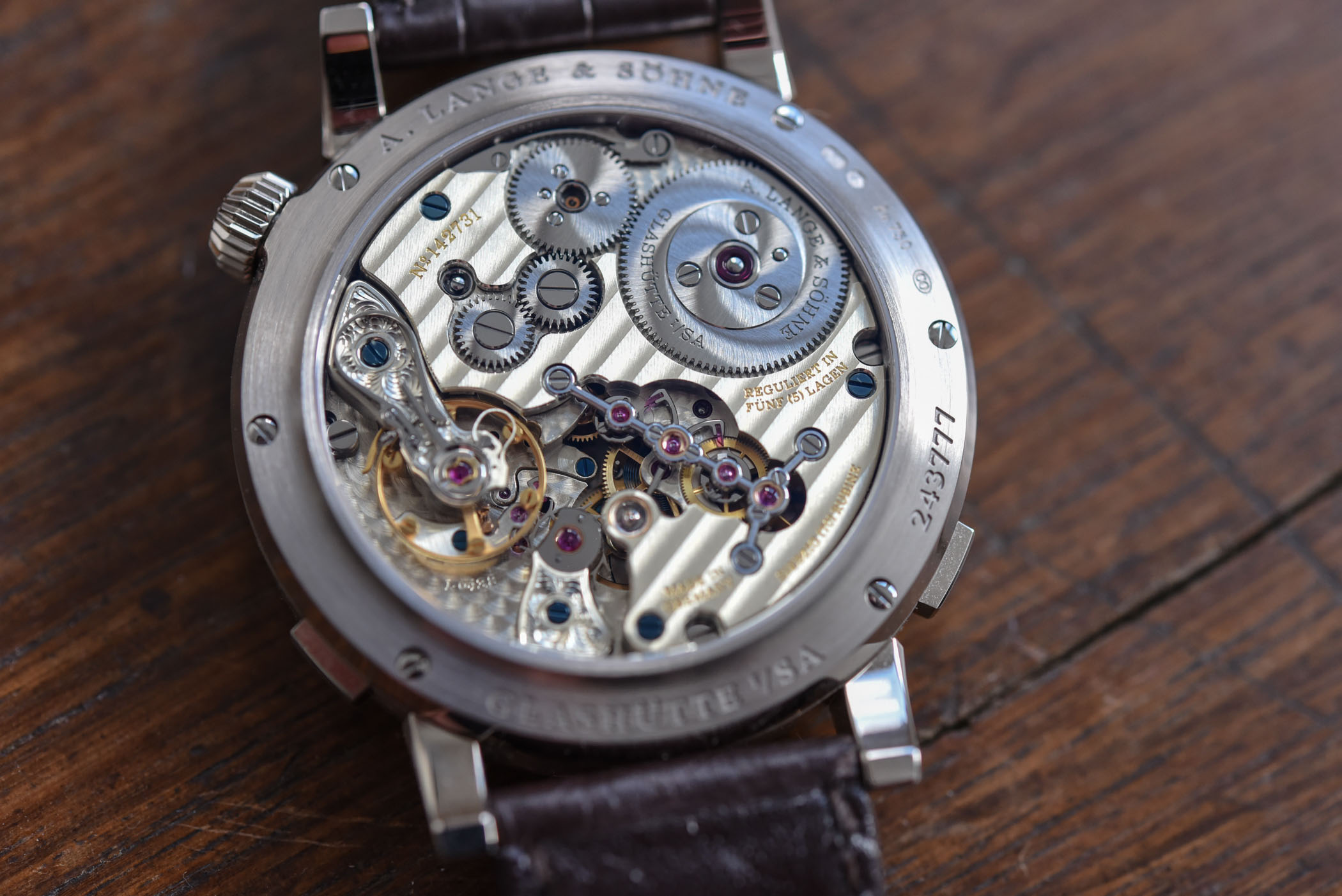
Peripheral date ring
Inspired by the layout of the Zeitwerk Striking Time with its gongs and hammers on the periphery of the movement, the Zeitwerk Date has a circumferential glass ring (with numerals from 1 to 31) with the date displayed in red. The peripheral date ring was the only solution possible given the large size of the numeral discs and the time bridge. Can you imagine a small conventional date window appearing on a Lange watch when the brand is renowned for its iconic outsize date format?
In the course of one month, the red segment completes one full revolution around the dial and performs one step exactly at midnight (along with the three time discs). To get a feel for the absolute precision of the jumps, you can see how these four separate indications advance in the blink of an eye very clearly in the video (minute 03:42).
Push-pieces on release
In the name of additional convenience and user-friendliness, the Zeitwerk Date has a push-piece at 4 o’clock to set the hour separately. The pusher solves the problem of adjusting the time via the crown, a lengthy process that would involve advancing minute by minute to reach the desired hour. To safeguard the other elements, a clutch uncouples the hour ring from the jumping numerals mechanism each time the pusher is depressed.
Along with the second push-piece at 8 o’clock to adjust the date, the way these push-pieces function is pretty unusual. Unlike a push-piece on a chronograph, for example, that transmits the power exerted by a finger on the pusher directly to the movement, the push-pieces on the Zeitwerk Date function when the pusher is released – when the pusher is no longer being pushed, so to speak. A chronograph pusher requires a certain thickness, stability and robustness but a pusher that functions on release can be thinner and, because it requires less space, it won’t affect the thickness of the watch – for the record, the movement height of the Zeitwerk Date is actually 0.3mm thinner than the Zeitwerk.
Vital statistics
Although this article is more technical in nature and not devoted to the look and feel of the Zeitwerk Date, some vital statistics are of the essence. With only one model available in the line-up, the Zeitwerk Date comes in a handsome 18k white gold case with a grey dial crafted from solid silver. The case measures 44.2mm and has a height of 12.3mm.
As you would expect from ALS, the finishes are superlative. From the deep-set bevelled apertures for the time to the brushed finish on the silver time bridge; from the snailed interior of the small seconds counter to the rhodium-plated gold hands and the contrasting touches of red provided by the date and AB area of the power reserve, no stone has been left unturned in the pursuit of exceptional finishes.
Calibre L043.8
Technically and aesthetically, the new manual-winding movement is beautiful. Measuring 37mm across and with a height of 8.9mm, the movement is composed of 516 parts, 70 jewels and two screwed gold chatons. The remontoire or constant-escape bridge can be seen spanning the gears and is responsible for powering the balance with a uniform flow of force and delivering the one-per-minute impulse for switching the three-disc jumping numeral displays. Oscillating at 18,000vph, the power reserve is of 72 hours.
The handcrafted finishes are spectacular with polished screw heads, chamfered bevelled and polished edges of the plates, bridges and levers, the signature floral engraving on the balance cock, the perlage on the base plate, the solar pattern decorating the barrel and ratchet wheel, the blued screws and the classic three-quarter plate made of untreated German silver decorated with Glashütte ribbing. Even the constant-escape bridge with its anchor shape is beautifully finished and each and every one of the 28 inner angles of the bridge is polished by hand. And just to be as sure as humanly possible that the assembly is perfect, the movement is assembled twice.
Price & availability
The A. Lange & Söhne Zeitwerk Date is presented with a hand-stitched dark brown alligator strap and a white gold prong buckle, matching the material of the case. The price is EUR 93,500 and the watch is available from all ALS boutique and retailers.
For more information, please visit alange-soehne.com.

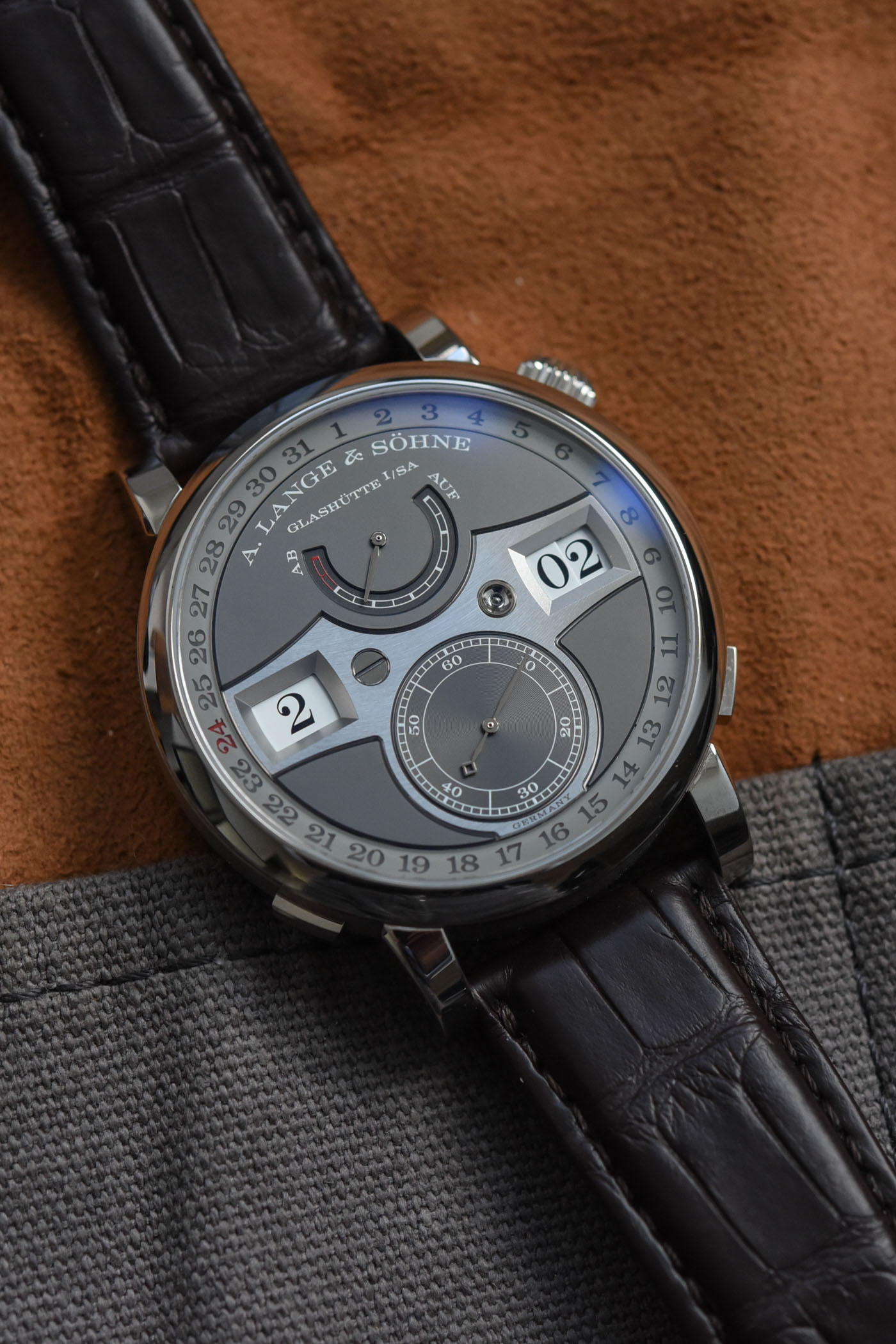
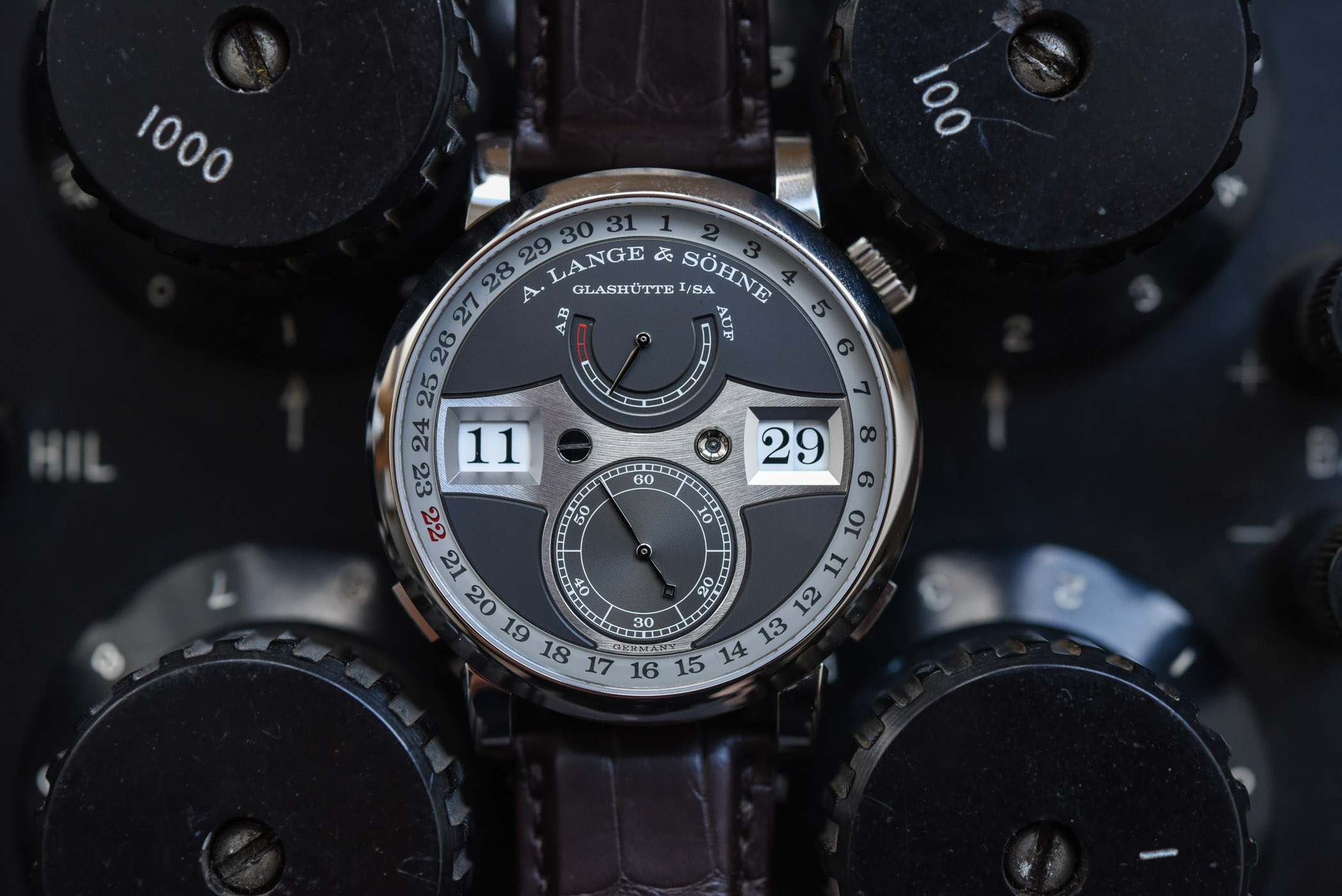
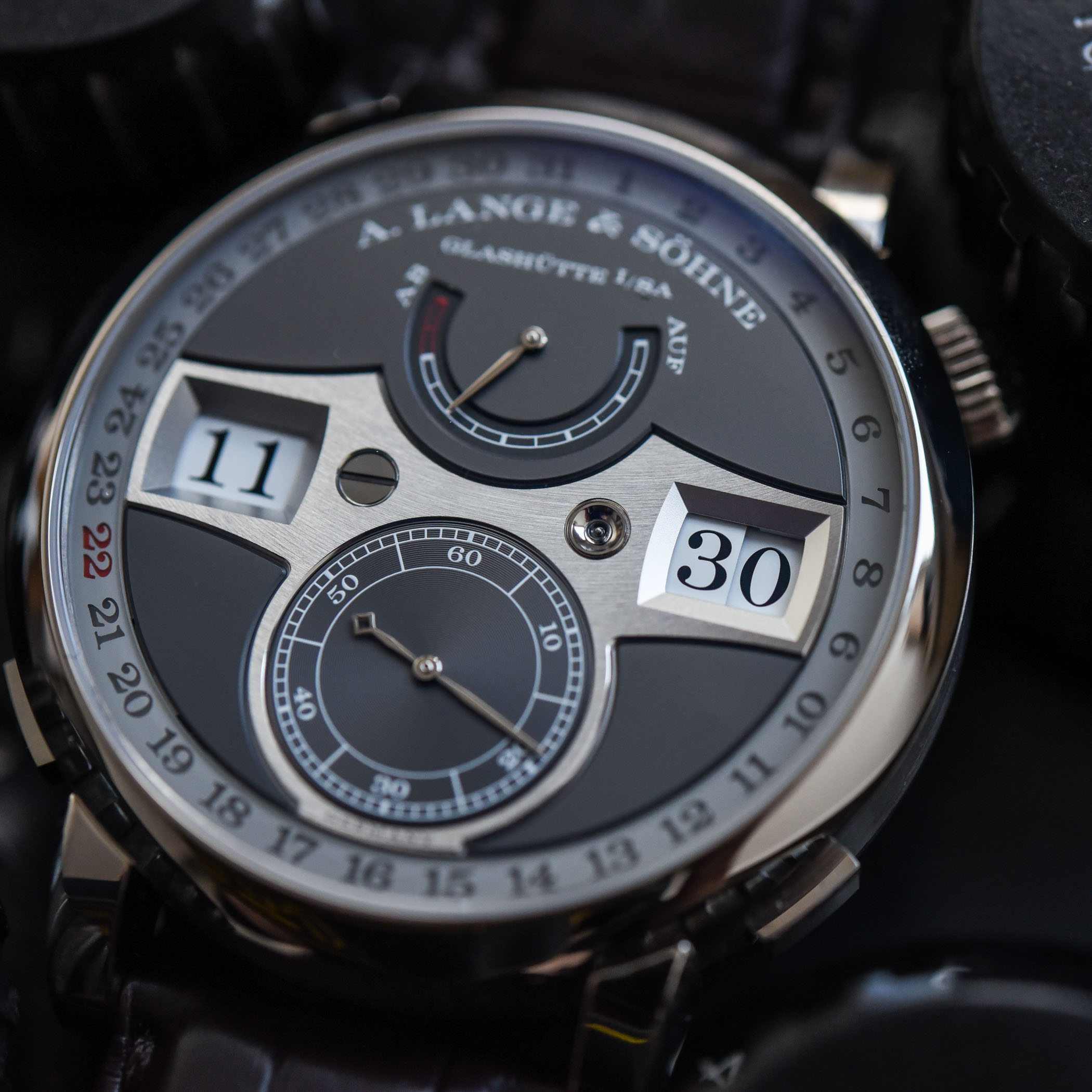
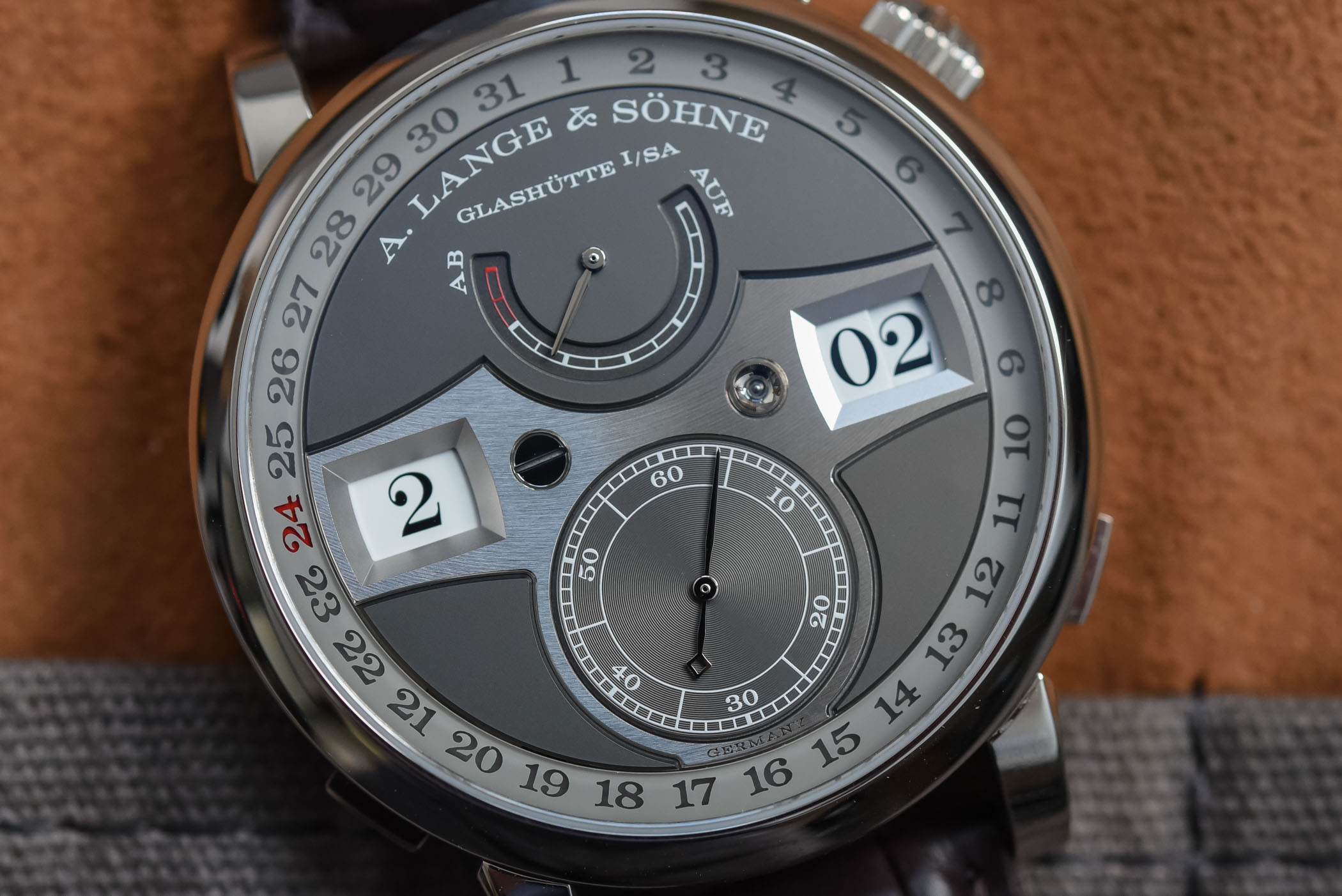

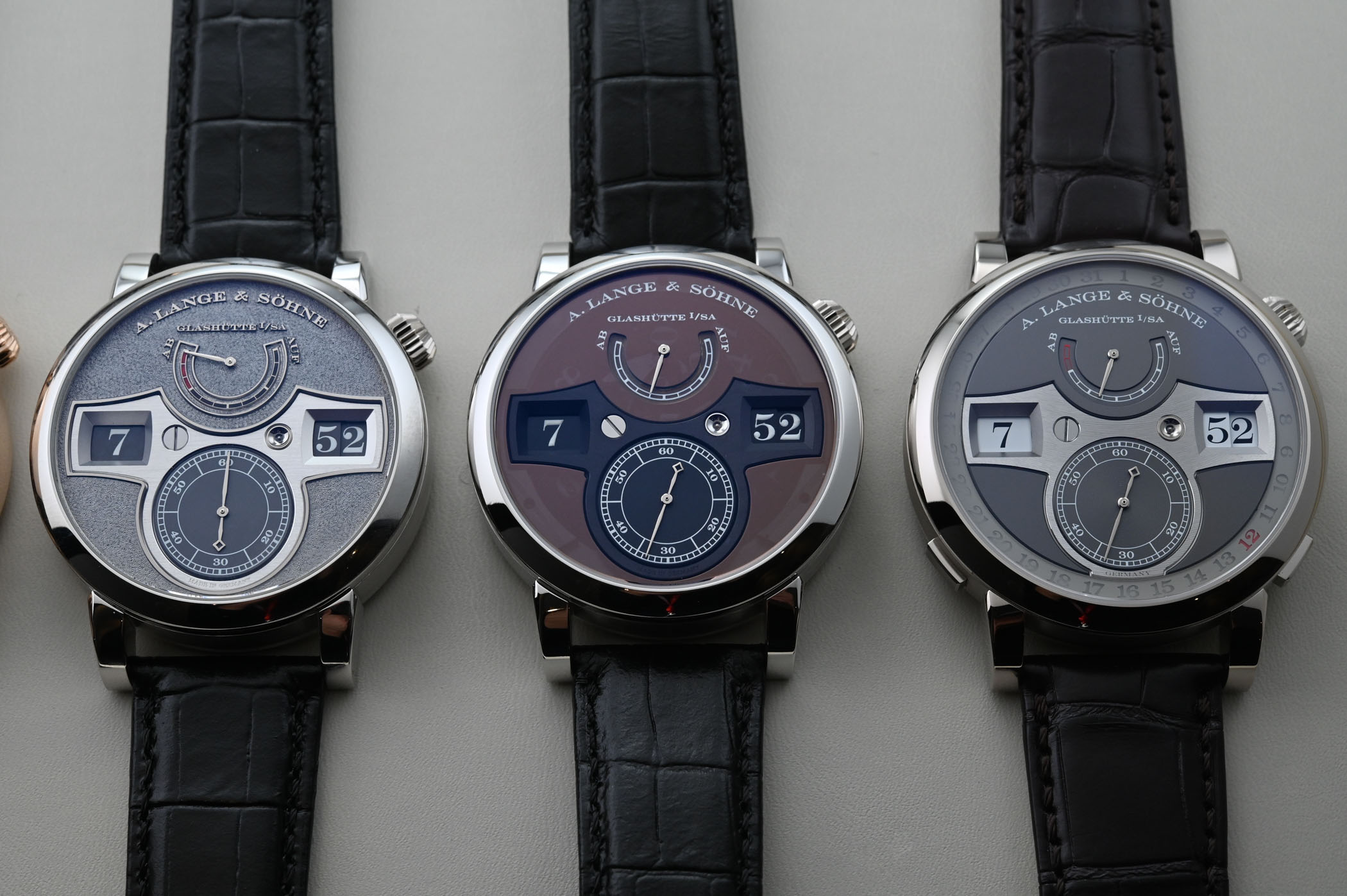
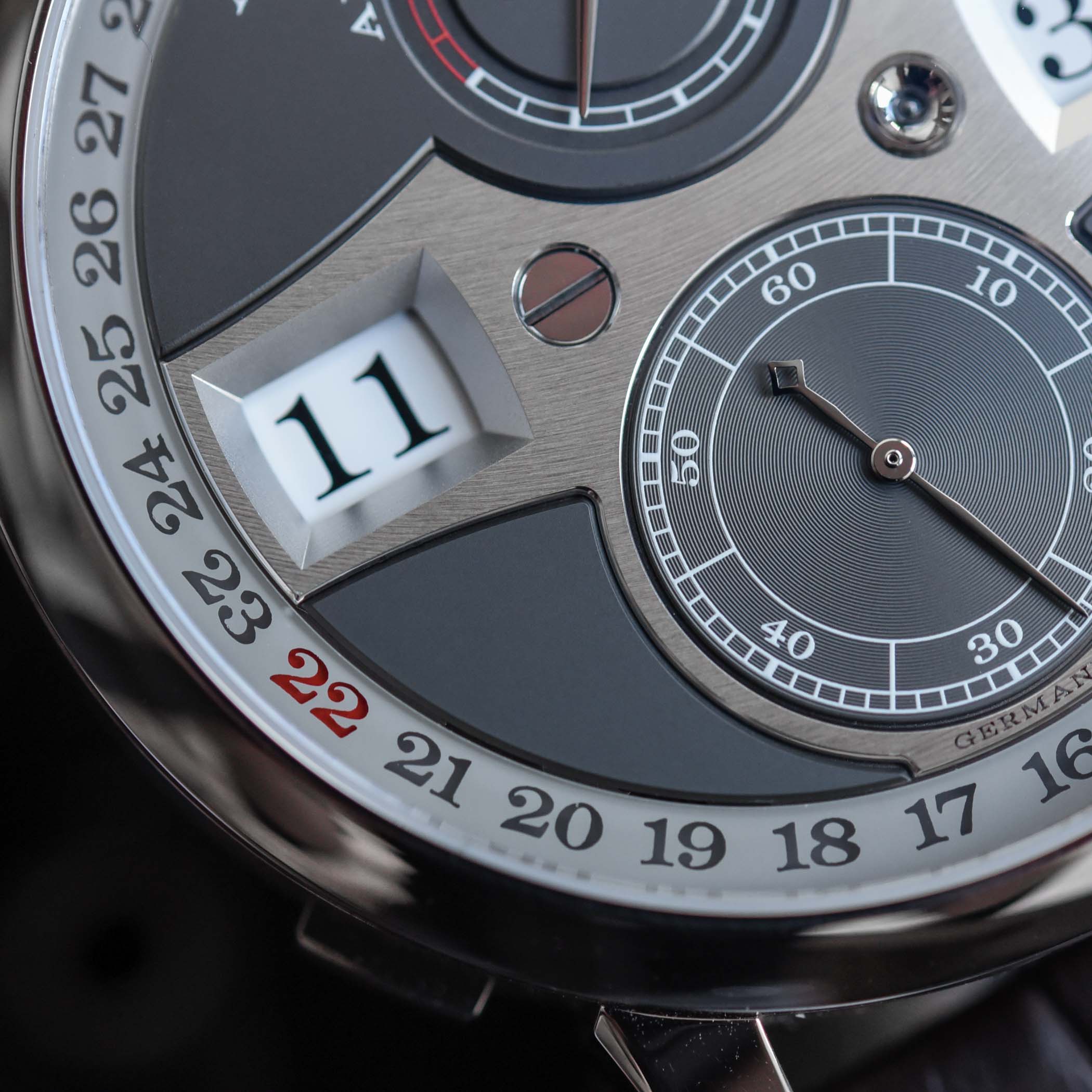
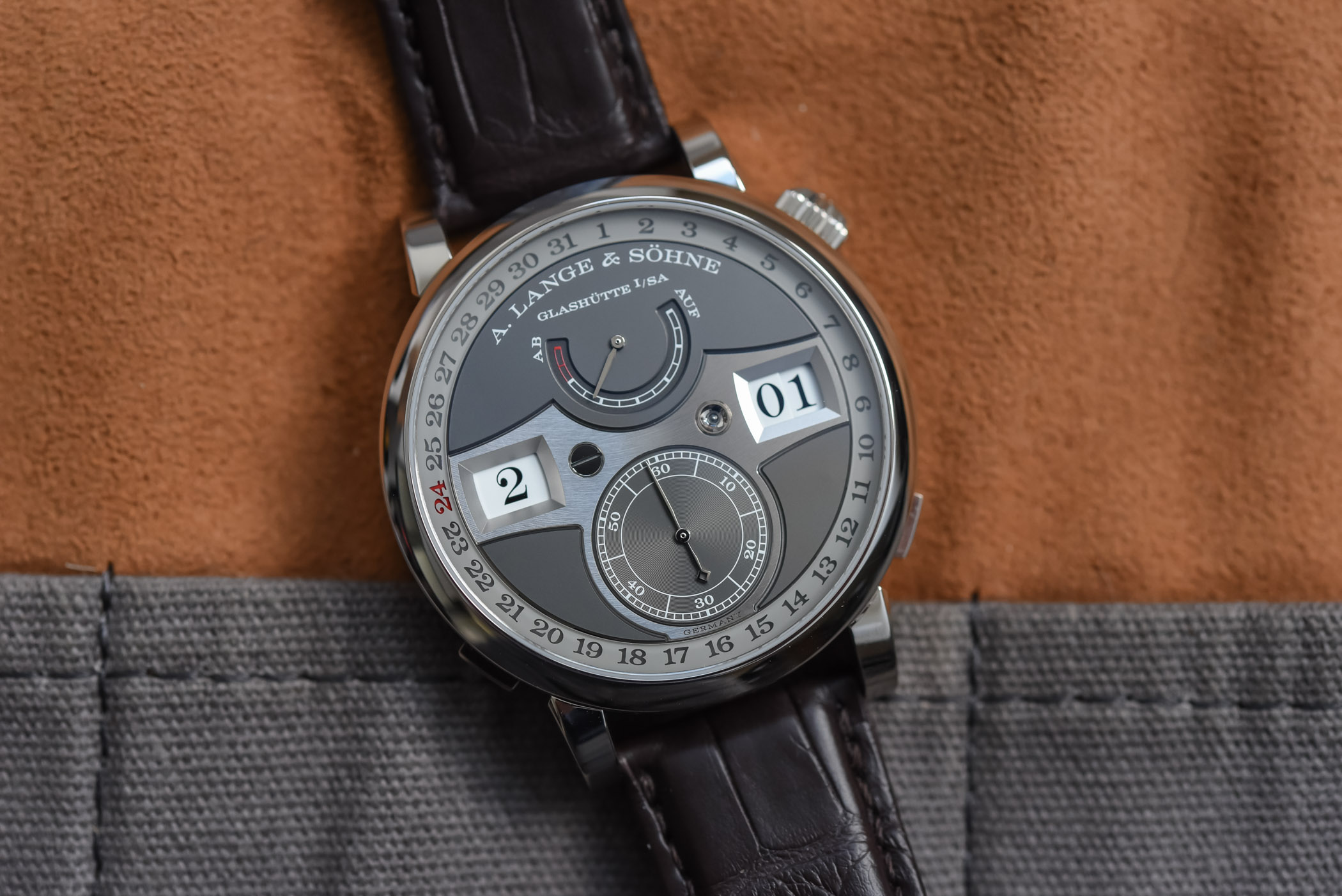
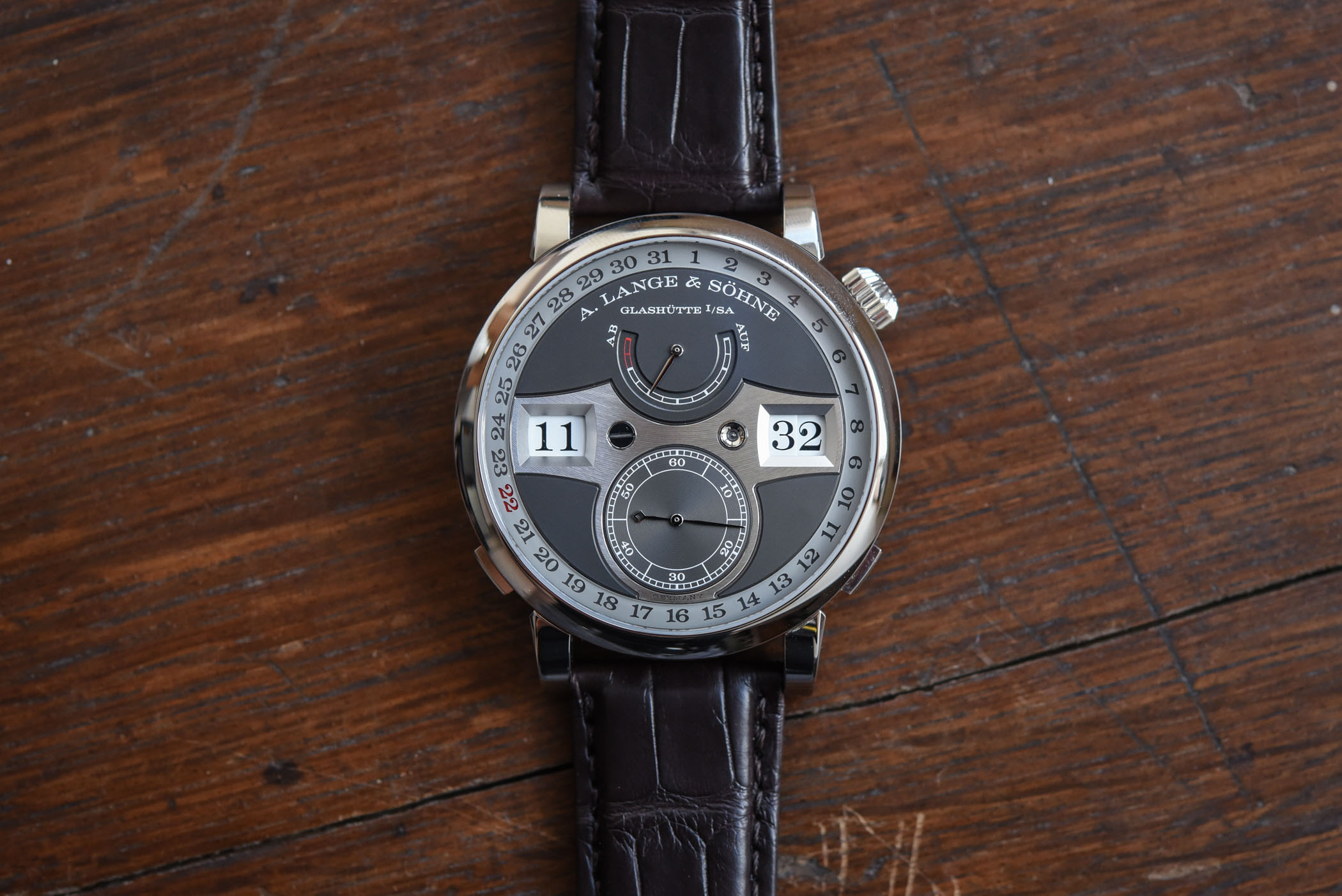
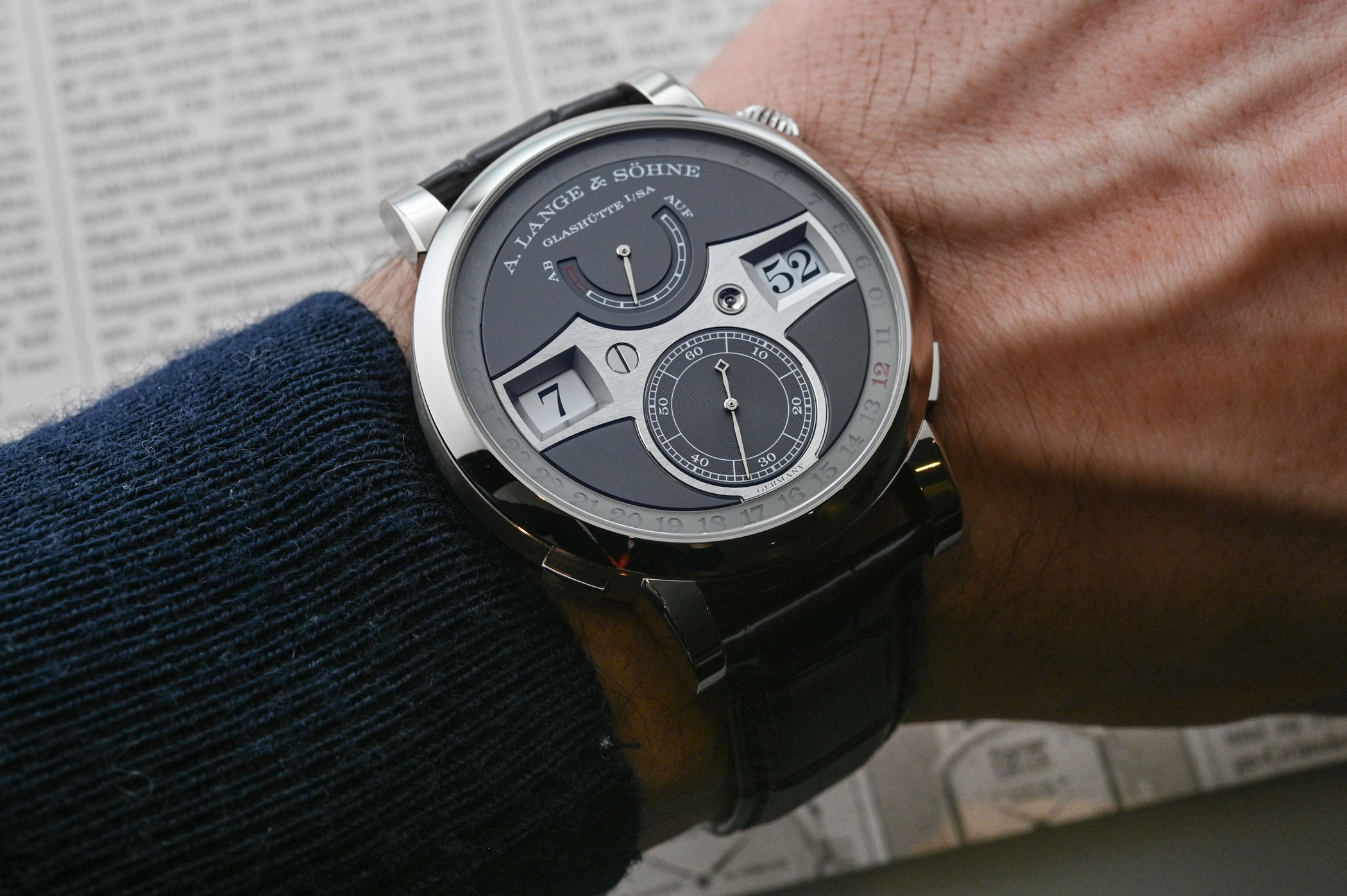
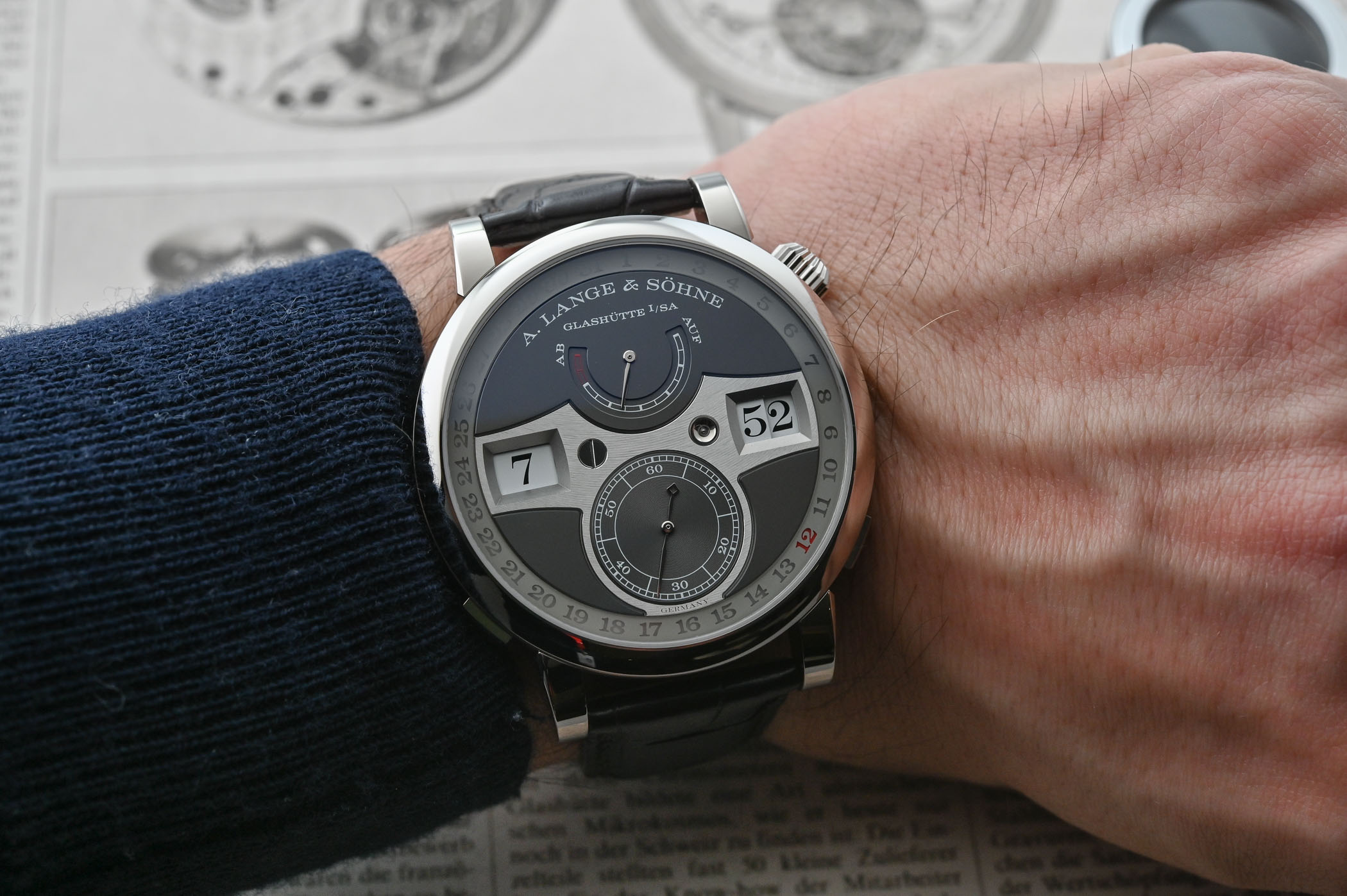
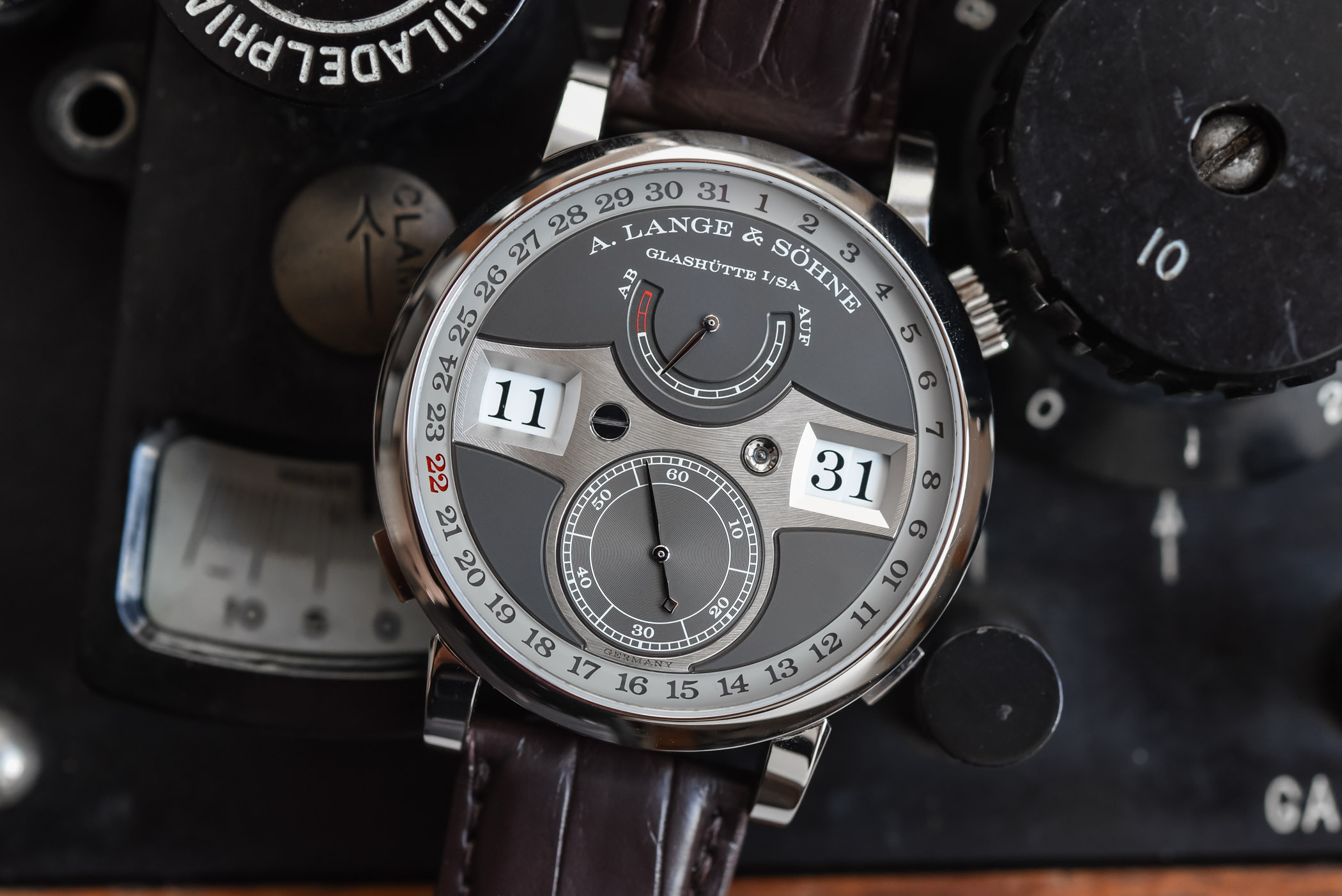
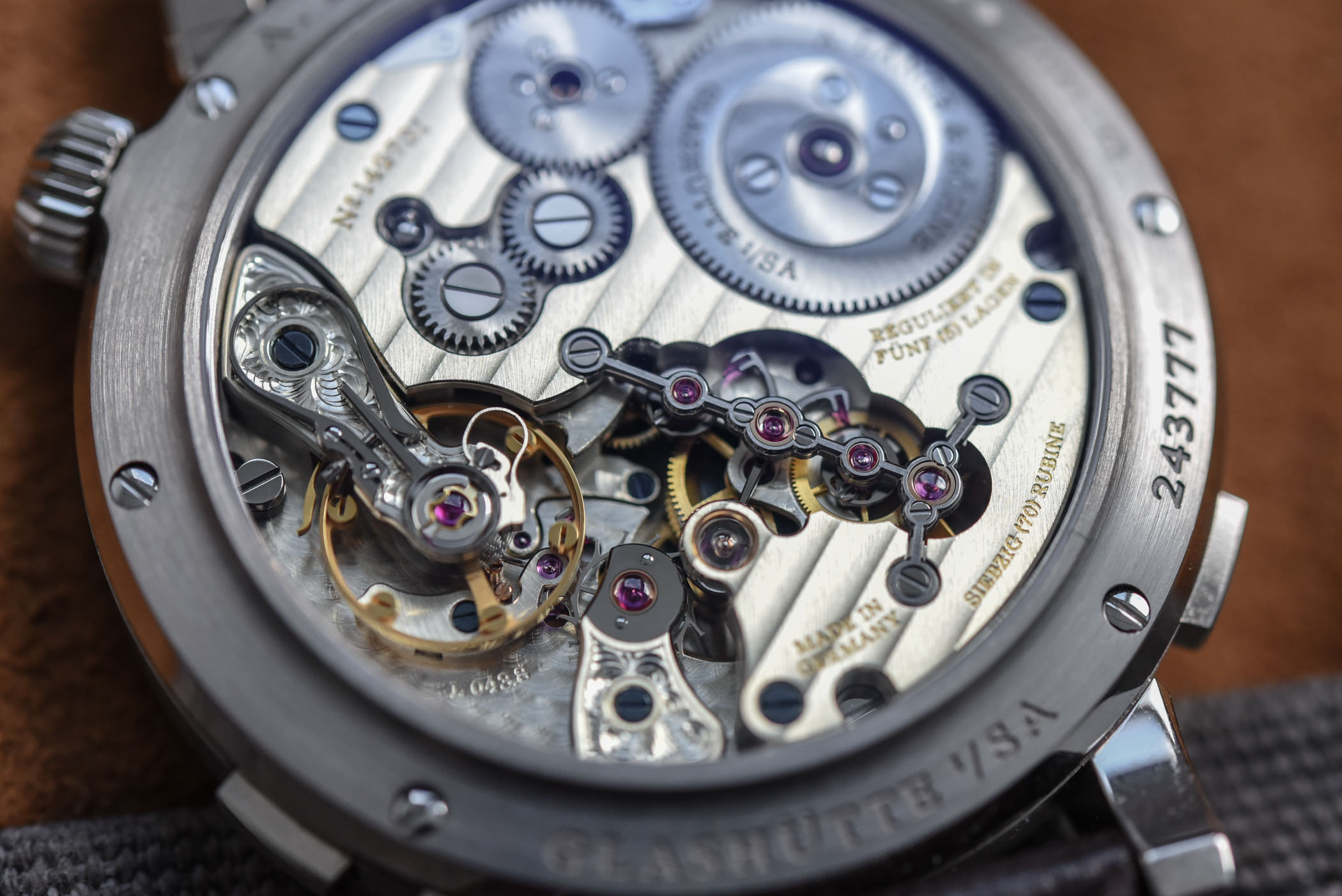
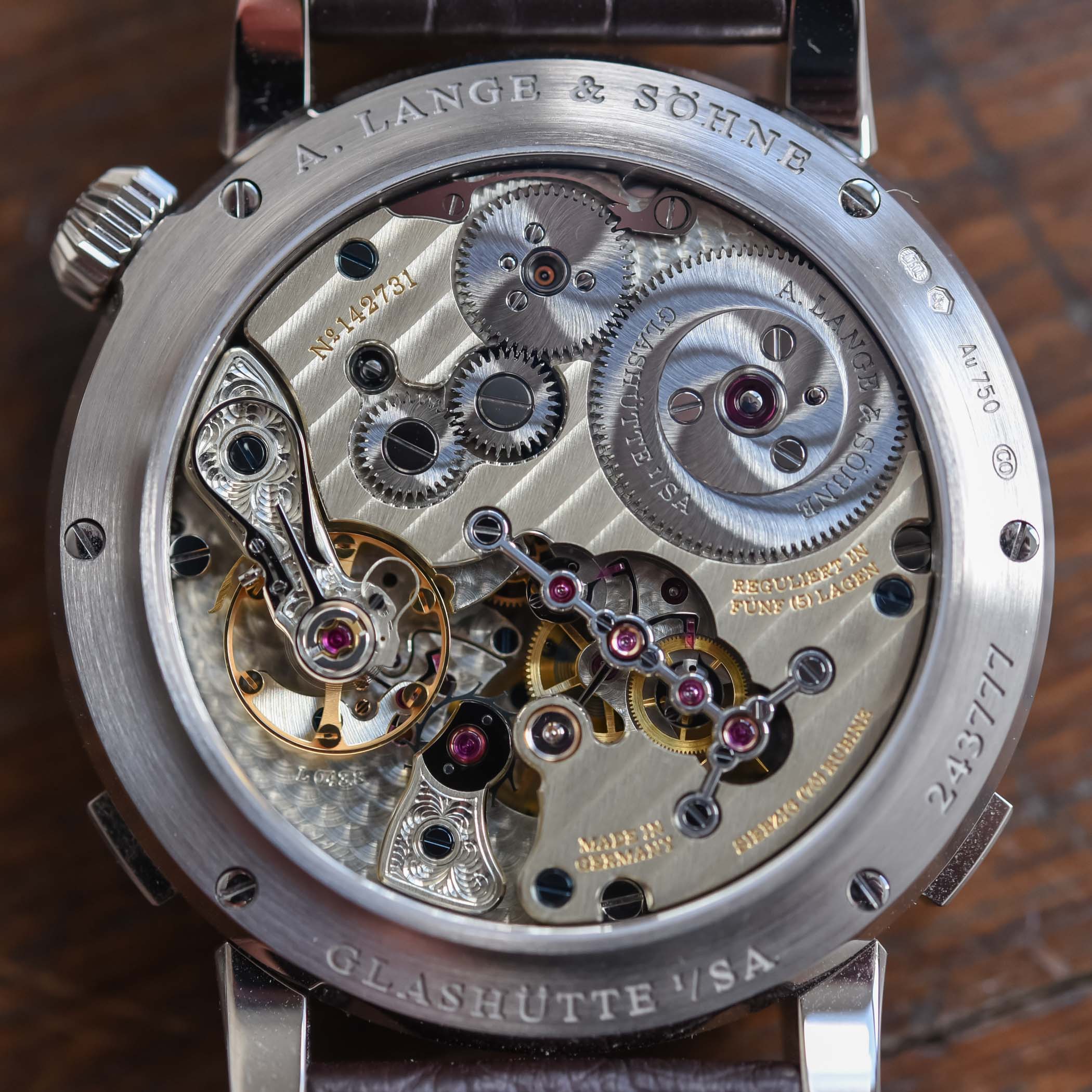
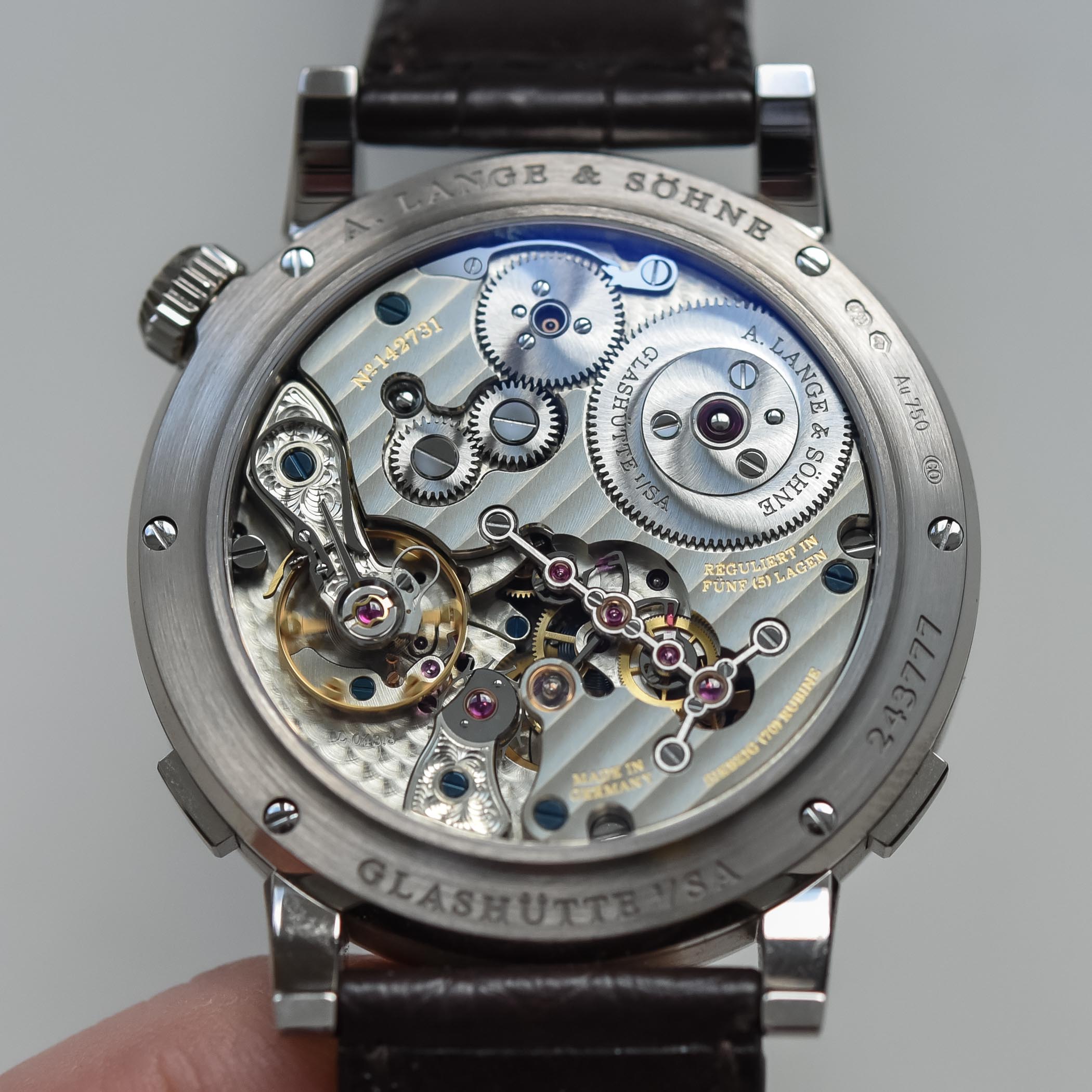
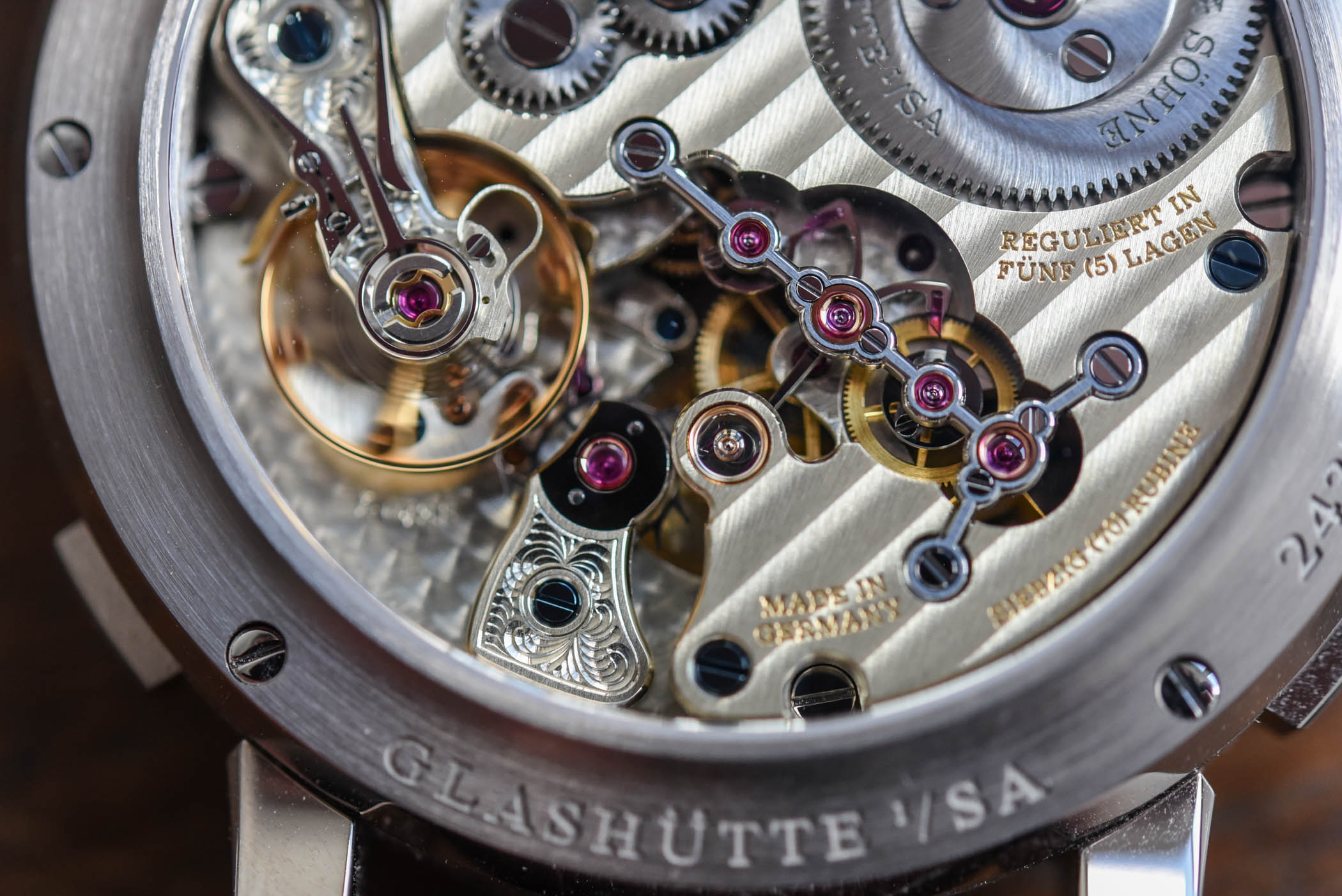



2 responses
When you have a work of art, you don’t place an ugly frame around it. The simplistic beauty of the Zeitwerk has made it my favorite watch and I personally view the Zeitwerk date as less aesthetic. The 72 hour power reserve would have been improvement enough.
I have the white gold/black dial, my favorite watch. Fit and finish are marvels in watch making. I agree the power reserve was needed. The date absolutely compliments the hour/minute markers. The 44mm may be to large for some wrists/forearms but it fits mine perfectly. Beautiful watch. Well done Lange!